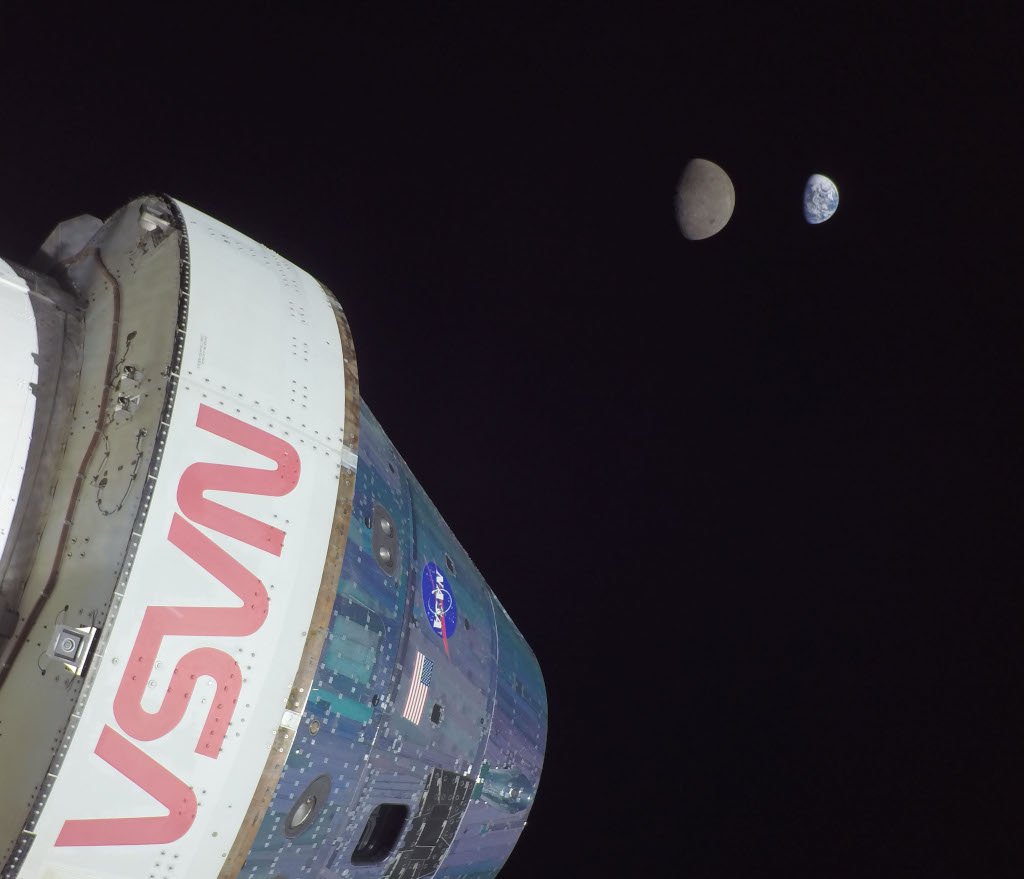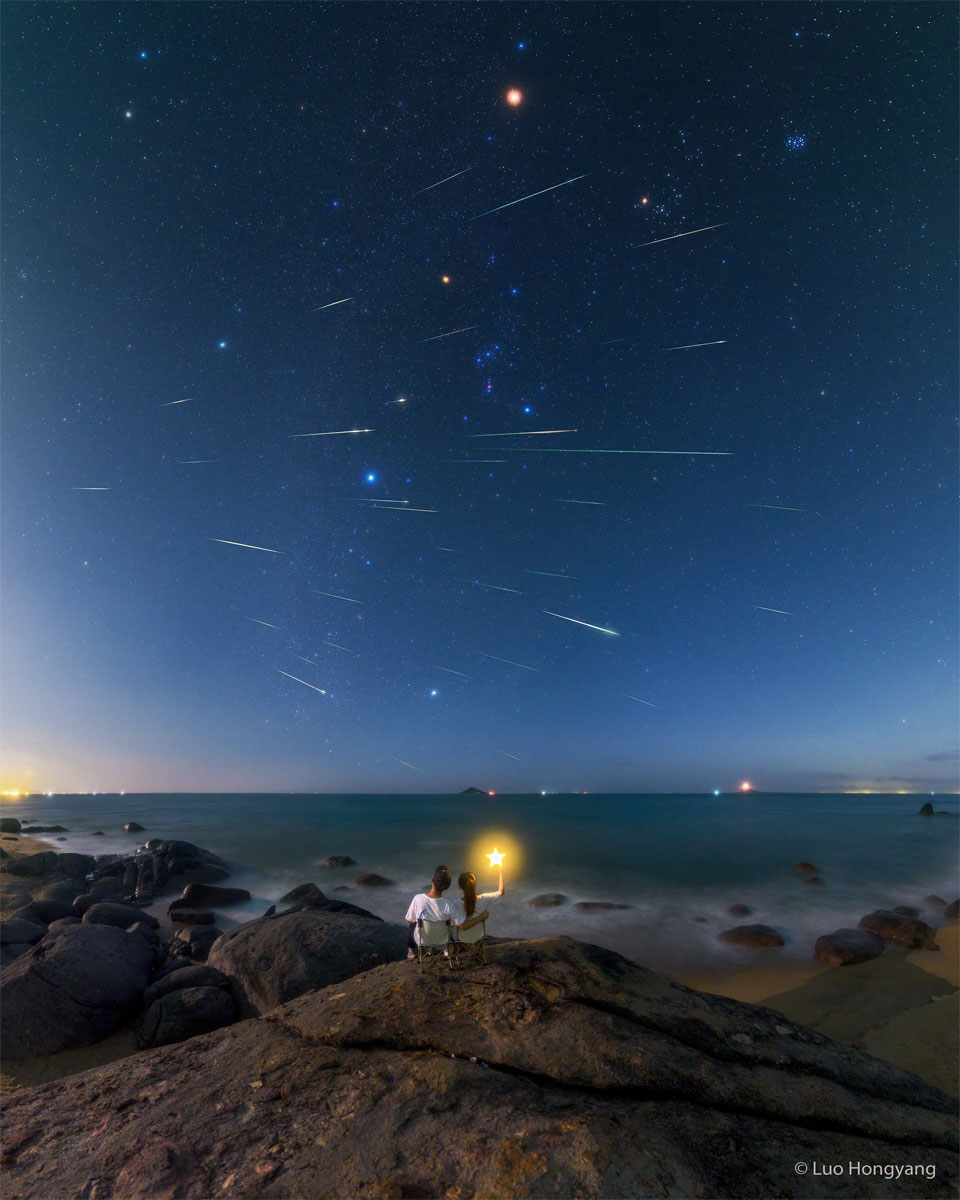Nombre total de pages vues
03/12/2022
AVIATION IMAGINEE - Influencée par les frères Montgolfier
ASTRONOMY - Stereo Mars near Opposition
2022 December 3
Image Credit & Copyright: Marco Lorenzi
Explanation: Mars looks sharp in these two rooftop telescope views captured in late November from Singapore, planet Earth. At the time, Mars was about 82 million kilometers from Singapore and approaching its opposition, opposite the Sun in planet Earth's sky on December 8. Olympus Mons, largest of the volcanoes in the Tharsis Montes region (and largest known volcano in the Solar System), is near Mars' western limb. In both the images it's the whitish donut-shape at the upper right. The dark area visible near center is the Terra Sirenum region while the long dark peninsula closest to the planet's eastern limb is Sinus Gomer. Near its tip is Gale crater, the Curiosity rover's landing site in 2012. Above Sinus Gomer, white spots are other volcanoes in the Elysium region. At top of the planet is the north polar cap covered with ice and clouds. Taken about two days apart, these images of the same martian hemisphere form a stereo pair. Look at the center of the frame and cross your eyes until the separate images come together to see the Red Planet in 3D.
02/12/2022
ASTRONOMY - Merging Galaxy Pair IIZw096
2022 December 2
Image Credit: ESA/Webb, NASA & CSA, L. Armus, A. Evans
Explanation: Bright at infrared wavelengths, this merging galaxy pair is some 500 million light-years away toward the constellation Delphinus. The cosmic mashup is seen against a background of even more distant galaxies, and occasional spiky foreground stars. But the galaxy merger itself spans about 100,000 light-years in this deep James Webb Space Telescope image. The image data is from Webb's Near-InfraRed Camera (NIRCam) and Mid-InfraRed Instrument (MIRI). Their combined, sharp infrared view follows galactic scale restructuring in the dusty merger's wild jumble of intense star forming regions and distorted spiral arms
01/12/2022
ASTRONOMY - Artemis 1: Flight Day 13
2022 December 1
Image Credit: NASA, Artemis 1
Explanation: On flight day 13 (November 28) of the Artemis 1 mission the Orion spacecraft reached its maximum distance from Earth. In fact, over 430,000 kilometers from Earth its distant retrograde orbit also put Orion nearly 70,000 kilometers from the Moon. In the same field of view in this video frame from flight day 13, planet and large natural satellite even appear about the same apparent size from the uncrewed spacecraft's perspective. Today (December 1) should see Orion depart its distant retrograde orbit. En route to planet Earth it will head toward a second powered fly by of the Moon. Splashdown on the home world is expected on December 11.
30/11/2022
ASTRONOMY - The Light, the Dark, and the Dusty
2022 November 30
Image Credit & Copyright: Anthony Quintile
Explanation: This colorful skyscape spans about four full moons across nebula rich starfields along the plane of our Milky Way Galaxy in the royal northern constellation Cepheus. Near the edge of the region's massive molecular cloud some 2,400 light-years away, bright reddish emission region Sharpless (Sh) 155 is at the center of the frame, also known as the Cave Nebula. About 10 light-years across the cosmic cave's bright walls of gas are ionized by ultraviolet light from the hot young stars around it. Dusty reflection nebulae, like vdB 155 to the right, and dense obscuring clouds of dust also abound on the interstellar canvas. Astronomical explorations have revealed other dramatic signs of star formation, including the bright reddish fleck of Herbig-Haro (HH) 168. Below and right of center, the Herbig-Haro object emission is generated by energetic jets from a newborn star.
29/11/2022
BIOMIMETISME - LA NATURE INSPIRE LA SCIENCE - Le bombyx
ASTRONOMY - The Gum Nebula Supernova Remnant
2022 November 29
Image Credit & Copyright: Victor Lima
Explanation: Because the Gum Nebula is the closest supernova remnant, it is actually hard to see. Spanning 40 degrees across the sky, the nebula appears so large and faint that it is easily lost in the din of a bright and complex background. The Gum Nebula is highlighted nicely in red emission toward the right of the featured wide-angle, single-image photograph taken in late May. Also visible in the frame are the Atacama Desert in Chile in the foreground, the Carina Nebula in the plane of our Milky Way galaxy running diagonally down from the upper left, and the neighboring Large Magellanic Cloud (LMC) galaxy. The Gum Nebula is so close that we are much nearer the front edge than the back edge, each measuring 450 and 1500 light years respectively. The complicated nebula lies in the direction of the constellations of Puppis and Vela. Oddly, much remains unknown about the Gum Nebula, including the timing and even number of supernova explosions that formed it.
28/11/2022
ASTRONOMY - Leonid Meteors Through Orion
2022 November 28
Image Credit & Copyright: Luo Hongyang
Explanation: Where will the next meteor appear? Even during a meteor shower, it is practically impossible to know. Therefore, a good way to enjoy a meteor shower is to find a place where you can sit comfortably and monitor a great expanse of dark sky. And it may be satisfying to share this experience with a friend. The meteor shower depicted was the 2022 Leonids which peaked earlier this month, and the view is from Hainan, China looking out over the South China Sea. Meteor streaks captured over a few hours were isolated and added to a foreground image recorded earlier. From this place and time, Leonid meteors that trace back to the constellation of Leo were seen streaking across other constellations including Orion. The bright red planet Mars appears near the top of the image. Bonding over their love of astronomy, the two pictured meteor enthusiasts, shown celebrating their common birthday this month, are now married.
26/11/2022
BIOMIMETISME - LA NATURE INSPIRE LA SCIENCE - Des écrans inspirés des ailes transparentes d'un petit papillon
LES BELLES INVENTIONS DE LEONARD DE VINCI - Le scaphandre
Aucun dessin connu de Léonard de Vinci ne ressemble exactement à cette image de scaphandre. Toutefois, il en existe qui possèdent certains ...

-
2022 September 26 All the Water on Planet Earth Illustration Credit: Jack Cook, Adam Nieman, Woods Hole Oceanographic Institution ; Data ...
-
2025 May 11 The Surface of Venus from Venera 14 Image Credit: Soviet Planetary Exploration Program , Venera 14 ; Processing & Copyri...








